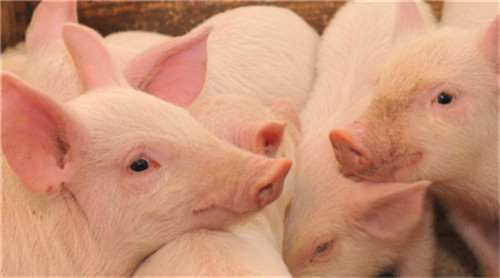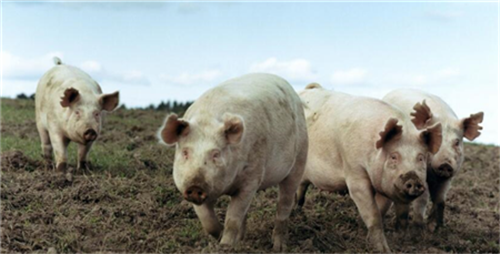Analysis on the Role of Pathogenic Microorganisms in Respiratory Tract of Pig Farm (Ⅰ)
Weaning-fattening pigs have diseases dominated by different pathogens in different growth stages, in which the primary pathogen is the initiator of the disease, and the secondary infection pathogen is often the propeller of the disease. Most of the primary pathogens run through all stages of pig production, such as circovirus (PCV2), porcine reproductive and respiratory syndrome virus (PRRSV), classical swine fever virus (CSFV), pseudorabies virus (PRV), etc., while the principle of secondary venereal disease has different characteristics in different stages, such as Haemophilus parasuis (HPS) can cause swollen joints of pigs, and can also cause porcine polycellulositis. Streptococcus (S.S) can cause joint swelling, septicemia and meningitis in pigs, and Actinobacillus pleuropneumoniae (APP) can aggravate the severity of pneumonia. The causes of disease syndrome in pigs are complex and are generally the result of the interaction between invasive or normally carried pathogens and environmental factors (such as dust or temperature fluctuations, feeding management).
Respiratory syndrome (PRDC) is more common in nursing pigs (25kg). The occurrence of PRDC usually begins with the infection in the lactation stage (especially the pathogen carried by young sows is not well cleared before mating and thus transmitted vertically to piglets). It can also be infection in the conservation stage, which may be complicated with several viruses (PRRSV, PCV2, CSFV, PRV, etc.) in the early stage of infection, which may be congenital infection (some weak offspring are born with virus) or horizontal infection in the later stage. Respiratory syndrome is often caused by improper management measures or driven by some secondary bacterial pathogens.

"time bomb" of Porcine Respiratory Syndrome: circle, Blue ear
How harmful is circovirus (PCV2) to pig farms? From a serological point of view, PCV2 has been prevalent all over the world. Research data show that the positive rate of PCV2 serum is very high, pigs are generally infected with virus, and pigs can reach 100% in individual stages. In the laboratory artificial disease model, it is also found that simple inoculation of PCV2 can only cause mild or inobvious clinical symptoms, mainly long-term infected lymph nodes of pigs, and will not cause serious production loss. This situation means that if other pathogens cooperate, circovirus and healthy pigs can coexist harmoniously, and the impact on pigs is limited.
Porcine reproductive and respiratory disorder syndrome (PRRS) virus can form persistent infection and recessive infection, and its serum positive rate is similar to that of circovirus serum. it is also common to carry the virus, so it is difficult to eradicate PRRS in pig farms. However, its biological characteristics are different from those of circovirus. Porcine reproductive and respiratory disorder syndrome (PRRS) virus pays great attention to biological balance. When vaccinated with blue ear vaccine, it often changes its naturally formed stable system because of the mass reproduction of the virus caused by antibody dependence enhancement (ADE). Therefore, pig farms will fluctuate if they are vaccinated with live attenuated blue ear vaccine for the first time, but the vaccination work will be more stable after that. If biosafety is in place, porcine reproductive and respiratory syndrome virus will naturally form a stable equilibrium without blue-ear vaccination. As long as this balance is not broken, the basic impact on production will not be very great. Pig farms that often import breeding pigs from the outside can easily upset this balance. This is why these two pathogenic microbes are defined as "time bombs". Although there are ticking time bombs in every pig farm, the harm of ticking time bombs is not so terrible without the cooperation of "igniters".
Goalkeeper of porcine respiratory syndrome: atrophic rhinitis
Bordetella bronchisepticum (Bb) is mainly deposited on the cilia of porcine respiratory tract mucosa, and is often the first infection factor when SPF pigs are infected. Bb first settled and adsorbed on the ciliated epithelial cells, then proliferated on the mucosal surface and produced toxins, resulting in inflammation, proliferation and cilia exfoliation of mucosal epithelial cells. Serious pathological changes can only be caused by early infection of Bordetella bronchial septicemia. There are two main serotypes of Pasteurella multocida (Pm): type An and type D, of which type An is bacterial pneumonia and type D is atrophic rhinitis. Pasteurella multocida mostly resides in the tonsils and grows in semi-fluid mucus on the nasal mucosa rather than on the nasal epithelium. Pasteurella multocida, whether type An or D, is difficult to settle and reproduce in healthy pig nasal mucosa under normal circumstances, so this bacteria generally does not settle in the nasal cavity unless the nasal mucosa has been damaged. Pasteurella multocida, porcine cytomegalovirus and other factors (such as high concentration of ammonia and dust in pig farms can cause nasal mucosal damage). In this way, Pasteurella multocida can establish infection in the nasal cavity of pigs, produce toxins and cause pathological changes, resulting in progressive atrophic rhinitis.
As the infection rate of Bordetella bronchisepticum in pigs is very high, basically close to 100%, it will first be infected with Bordetella bronchosepticum in suckling piglets. In the pathogenic process, Bordetella bronchisepticum plays a leading role. Pasteurella multocida makes the disease more serious. Because Bordetella bronchisepticum infection can damage the nasal mucosa, the D-type Pasteurella multocida toxin-producing strain can settle in the nasal cavity. In this way, type D Pasteurella multocida toxin can destroy the turbinate bone and change the growth of bone, cause changes in the nasal microenvironment, and provide necessary conditions for the mass reproduction of other common bacteria in the nasal cavity (Mycoplasma hyopneumoniae).
- Prev

Why is the incidence of porcine respiratory disease syndrome so high?
Why is the incidence of porcine respiratory disease syndrome so high?
- Next

Role Analysis of Respiratory tract pathogenic microorganisms in Pig Farm (part two)
Role Analysis of Respiratory tract pathogenic microorganisms in Pig Farm (part two)
Related
- On the eggshell is a badge full of pride. British Poultry Egg Market and Consumer observation
- British study: 72% of Britons are willing to buy native eggs raised by insects
- Guidelines for friendly egg production revised the increase of space in chicken sheds can not be forced to change feathers and lay eggs.
- Risk of delay in customs clearance Australia suspends lobster exports to China
- Pig semen-the Vector of virus Transmission (4)
- Pig semen-the Vector of virus Transmission (3)
- Five common causes of difficult control of classical swine fever in clinic and their countermeasures
- Foot-and-mouth disease is the most effective way to prevent it!
- PED is the number one killer of piglets and has to be guarded against in autumn and winter.
- What is "yellow fat pig"? Have you ever heard the pig collector talk about "yellow fat pig"?

